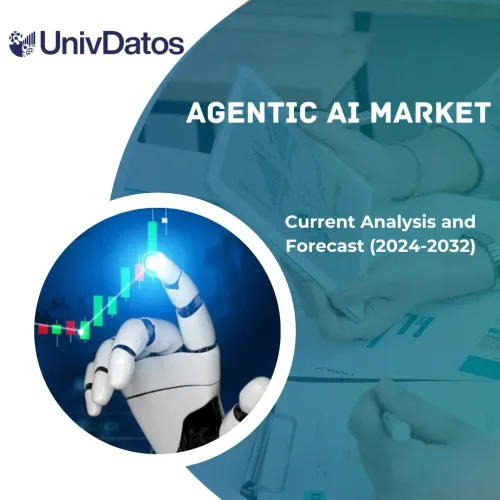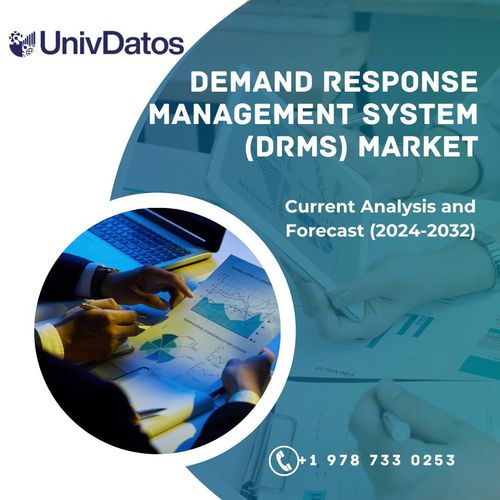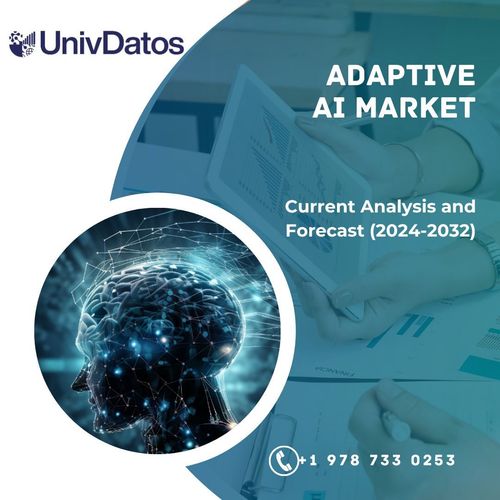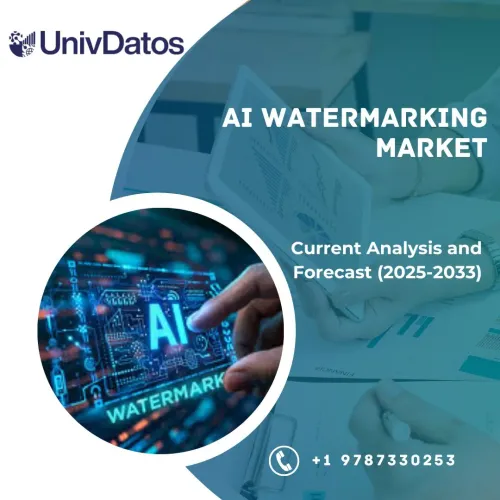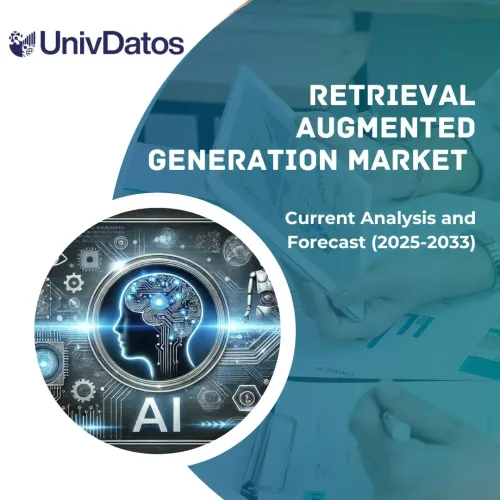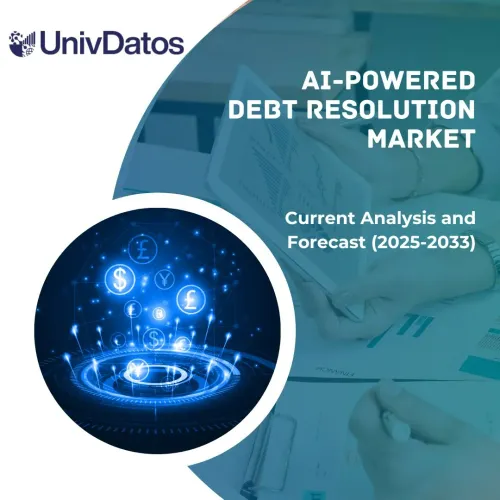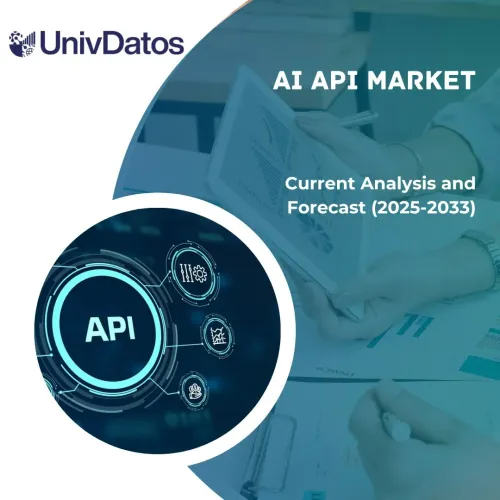- Home
- About Us
- Industry
- Services
- Reading
- Contact Us
AI Watermarking Market: Current Analysis and Forecast (2025-2033)
Emphasis on Component (Software, Hardware, and Services); Deployment Mode (On-Premises and Cloud-Based); Watermark Type (Visible Watermark, Invisible Watermark, and Hybrid Watermark); Application (Media & Entertainment, Government, Healthcare, IT & Telecommunication, and Others), and Region/Country
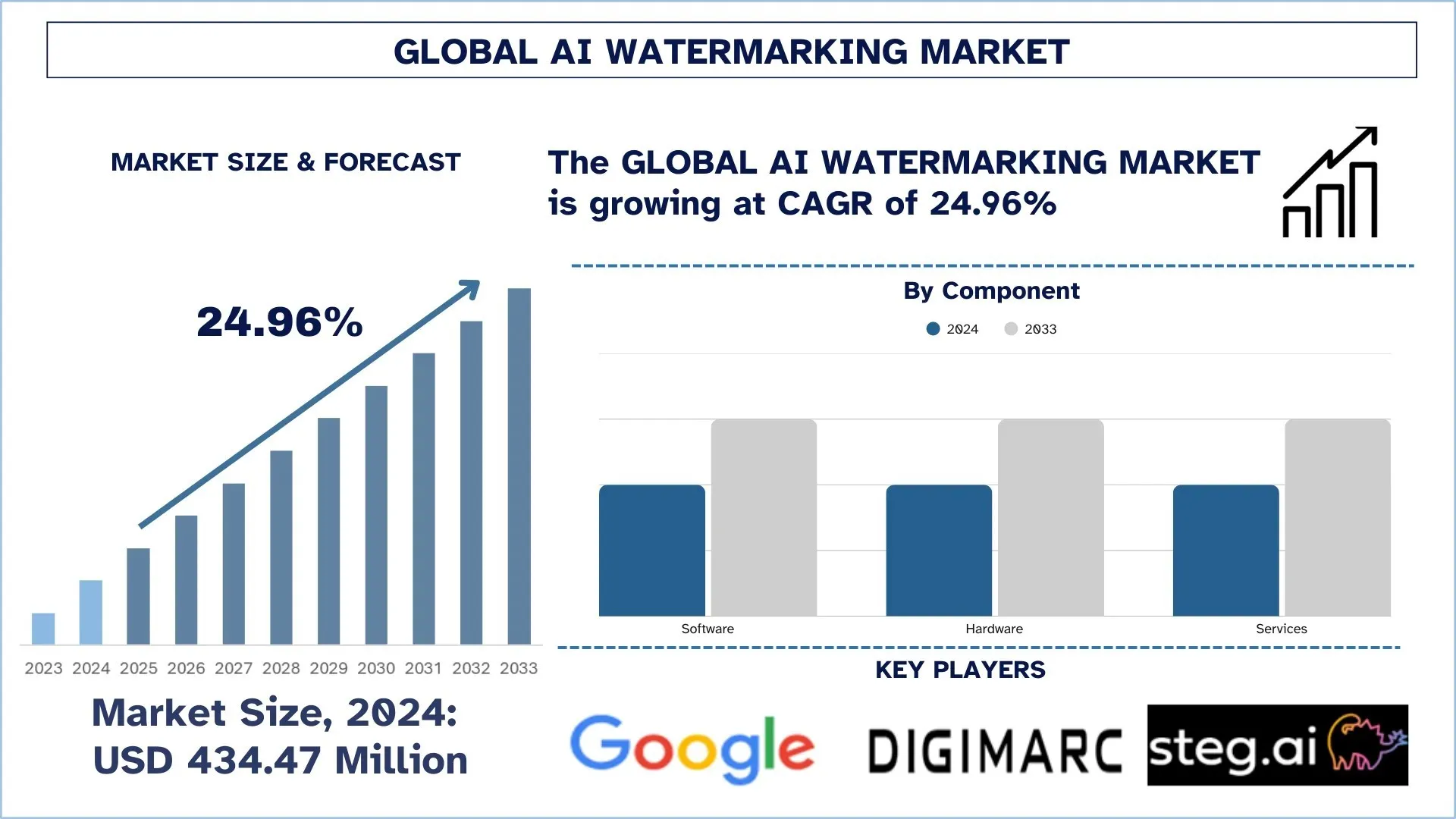
Global AI Watermarking Market Size & Forecast
The AI Watermarking Market was valued at USD 434.47 million in 2024 and is expected to grow at a robust CAGR of approximately 24.96% during the forecast period (2025-2033F), driven by the increasing use of AI-generated text, images, audio, and video, as well as the growing risk of deepfakes.
AI Watermarking Market Analysis
AI watermarking is a technique that integrates a unique and recognizable tag or pattern in AI-generated content, images, audio, videos, and text to prevent plagiarism. That tag or pattern is called a watermark, which can be scanned by algorithms. With the exposure of generative AI tools such as ChatGPT and Midjourney, anyone can create images, videos, or content that looks genuine and real, which can spread misinformation among people. For example, a fake image of the Pope wearing a white puffer jacket went viral in the year 2023 because people thought it was real. In fact, that image was created by Midjourney, which is a generative AI tool.
Scammers can use these tools to create phishing emails that look professional and trick people into clicking on the link, giving away passwords and data, as normal emails are full of grammatical mistakes. Scammers can even clone the voice of any person using AI, hence tricking people by pretending to be a bank manager, executive, friend, or family member and asking them to send money or share confidential information. In the USA, in 2023, a scammer cloned a girl’s voice and called her family member, and almost tricked them into paying the ransom amount. To prevent such acts and activities, watermarks are linked in AI-generated content to distinguish between which ones are real and which ones are fake. For instance, in 2025, President Donald Trump invested USD 500 billion in the AI ecosystem. Moreover, in 2024, the US private investment in AI has reached USD 109.1 billion. In July 2023, the US government started a program named “America’s AI Action Plan”, aimed to boost the U.S. position in AI through innovations, enhancing infrastructure, and security.
Global AI Watermarking Market Trends
This section discusses the key market trends that are influencing the various segments of the global AI watermarking market, as found by our team of research experts.
Integration of AI Watermarking Tools into Cloud Platforms
Among the major trends in the AI Watermarking market, the integration of AI watermarking tools into cloud platforms is the most prominent one. Cloud platforms provide on-demand computational resources such as servers, software, and storage to organizations. Due to their scalability, accessibility, and integration with the workflow, organizations prefer them. The cloud platform provides services through the Software-as-a-Service (SaaS) model, Platform-as-a-Service (PaaS) model, and Infrastructure-as-a-Service (IaaS) model. Moreover, cloud platforms now offer watermarking techniques or tools on their platform. For example, in Google Cloud Vertex AI, users can now embed watermarks in their content by using its watermarking tool. Further, in Tencent Cloud, users can now label their multimedia files by using its watermarking tool.
With the growth of SaaS based watermark tools, such as Google DeepMind SynthID, developers can now label and monitor their content without interrupting the user experience. In PaaS, the APIs and SDKs for watermarks are integrated into the current AI pipeline, ensuring that during model training or content creation, the watermark is embedded automatically. Meanwhile, IaaS watermark services are used by streaming platforms or gaming platforms that need high performance. For instance, in August 2023, Adobe embedded Content Credentials through Adobe Creative Cloud in its Firefly platform, ensuring that every AI-generated image had a watermark integrated in it, satisfying C2PA standards.
AI Watermarking Industry Segmentation
This section provides an analysis of the key trends in each segment of the global AI watermarking market report, along with forecasts at the global, regional, and country levels for 2025-2033.
The Software Segment Dominates the AI Watermarking Market
Based on component, the AI Watermarking market is segmented into Software, Hardware, and Services. In 2024, the software services dominated the market and are expected to maintain their leading position throughout the forecast period. With the rise in generative AI models, the demand for security against theft, model cloning, and phishing attacks is increasing as well, and software is coded with algorithms and APIs that can find the image, video, audio, or content that is AI-generated. Furthermore, software is flexible in nature; therefore, it can be integrated into any development department. Further, companies are looking for tools that can easily be integrated with their AI pipelines, cloud platforms, and existing systems. Moreover, generative AI tools such as ChatGPT, DALLE, and Midjourney operate on a cloud platform, and a software solution goes well with a cloud platform. Software can be operated remotely and can process large amounts of AI output daily. The attributes such as flexibility, scalability, and compatibility with cloud-based platforms make software dominate the market.
The Cloud-Based Segment Dominates the AI Watermarking Market.
Based on the deployment mode, the AI Watermarking market is segmented into on-premises and Cloud-Based. The cloud-based deployment mode held the largest market share in 2024. Companies are adopting cloud platforms due to their scalability, efficiency, and integration with the enterprise model. Cloud watermarking offers real-time authentication and monitoring. Additionally, based on the organization's needs, they can scale up or scale down, paying for what they have used. Moreover, businesses create and share a large amount of AI-generated content globally. By using cloud services, they can organize, manage, and access content easily. The growing demand for SaaS based products has increased the adoption of cloud platforms. The increased use of the remote and hybrid work model has boosted demand. The team can access, share, and monitor the AI-generated content globally. For example, Google Cloud Vertex AI offers a watermarking solution, allowing users to label and monitor their content without disrupting the user experience.
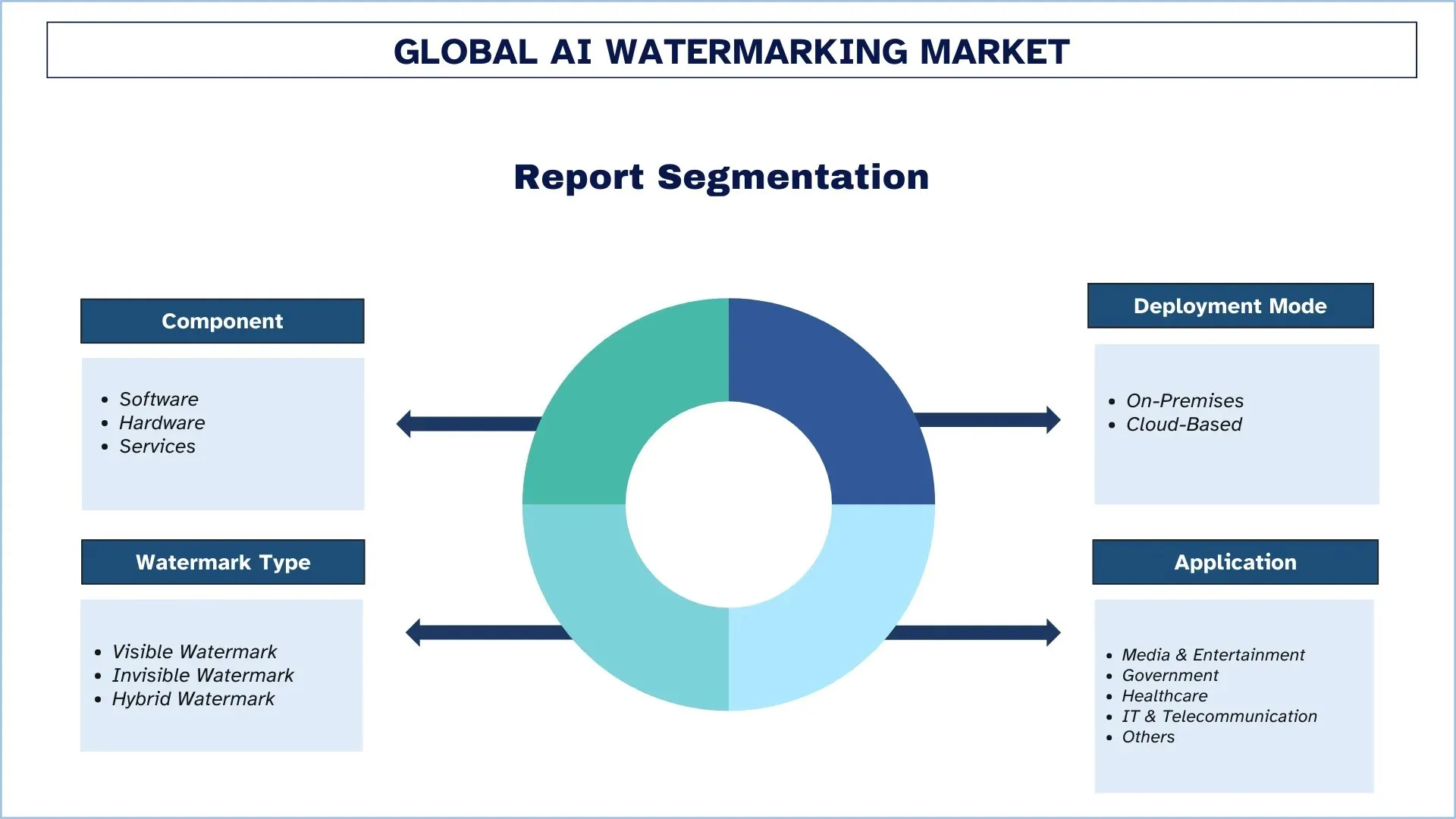
North America Dominated the Global AI Watermarking Market
The North America AI Watermarking market dominated the global AI Watermarking market in 2024 and is forecasted to remain in this position in the forecast period. This is due to the early adoption of technologies, specifically in cloud computing, cybersecurity, and SaaS applications. Furthermore, government programs such as Coalition for Content Provenance and Authenticity (C2PA) provide a global standard for content labeling, to ensure content originality, hence making watermarking an important aspect. Such programs have strengthened their position and encouraged both public and private firms to use watermarking technologies against deepfakes, misinformation, and content plagiarism. Additionally, the region's strong infrastructure and extensive use of AI content have significantly boosted its growth. Moreover, to ensure content authenticity and protect it from plagiarism, the use of AI watermark has increased as generative AI is now used for content writing, media, entertainment, and advertising. For instance, Cisco has also provided a fund of USD 1 million for the enhancement of AI tools and startups.
U.S. held a dominant Share of the North America AI Watermarking Market in 2024
The US leads the AI watermarking market. This is due to the early adoption of technologies, specifically in cloud computing, cybersecurity, and SaaS applications. Furthermore, government efforts and programs such as Coalition for Content Provenance and Authenticity (C2PA) provide a global standard for content labeling to make AI safe and to ensure content originality, which has made watermarking an important part, strengthening its position and encouraging both public and private firms to use watermarking technologies against deepfakes, misinformation, and content plagiarism. For instance, in 2025, President Donald Trump invested USD 500 billion in the AI ecosystem. Moreover, in 2024, the US private investment in AI reached USD 109.1 billion. In July 2023, President Donald Trump started a program named “America’s AI Action Plan”, aimed to boost the U.S. position in AI through innovations, enhancing infrastructure, and security.
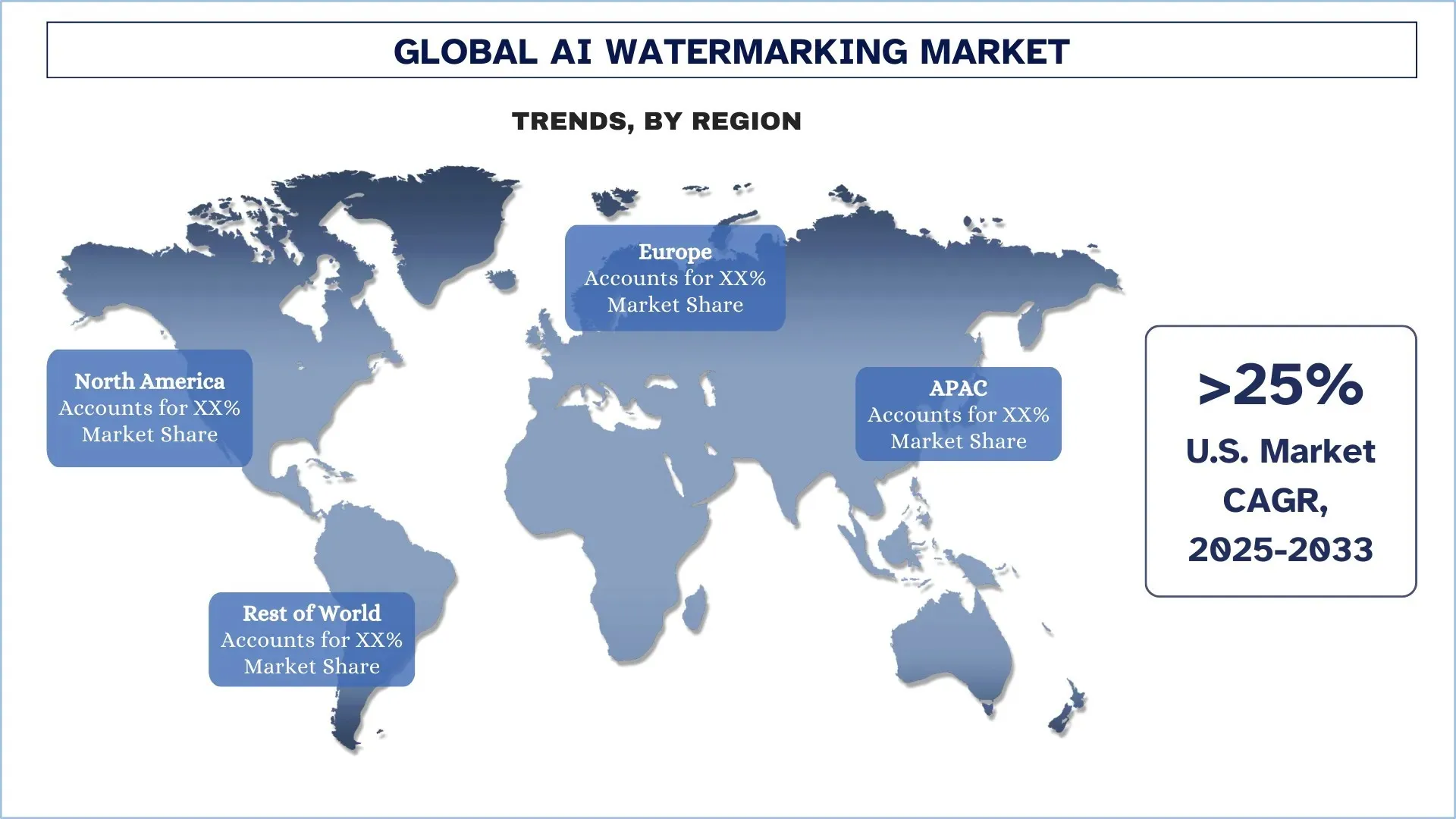
AI Watermarking Competitive Landscape
The global AI Watermarking market is competitive, with several global and international market players. The key players are adopting different growth strategies to enhance their market presence, such as partnerships, agreements, collaborations, new product launches, geographical expansions, and mergers and acquisitions.
Top AI Watermarking Companies
Some of the major players in the market are Google, Digimarc Corporation, steg.ai, IMATAG, Digify, Vertimatrix, Vobile Group Limited, RESEMBLE.AI, Meta, and Amazon Web Services, Inc.
Recent Developments in the AI Watermarking Market
In May 2025, Google launched the verification portal SynthID Detector to detect content generated by Google AI. The watermark embedded in images, text, videos, or audio remains detectable even if any of the media transforms.
In August 2023, Adobe embedded Content Credentials through Adobe Creative Cloud in its Firefly platform, ensuring that every AI-generated image had a watermark integrated in it, satisfying C2PA standards.
In 2023, Google DeepMind launched SynthID, a watermark tool for AI-generated images. The tool is available on Vertex AI, allowing users to generate images using Imagen and watermark their images using SynthID.
Global AI Watermarking Market Report Coverage
Report Attribute | Details |
Base year | 2024 |
Forecast period | 2025-2033 |
Growth momentum | Accelerate at a CAGR of 24.96% |
Market size 2024 | USD 434.47 Million |
Regional analysis | North America, Europe, APAC, Rest of the World |
Major contributing region | North America is expected to dominate the market during the forecast period. |
Key countries covered | U.S., Canada, Germany, U.K., Spain, Italy, France, China, Japan, South Korea, and India |
Companies profiled | Google, Digimarc Corporation, steg.ai, IMATAG, Digify, Vertimatrix, Vobile Group Limited, RESEMBLE.AI, Meta, and Amazon Web Services, Inc. |
Report Scope | Market Trends, Drivers, and Restraints; Revenue Estimation and Forecast; Segmentation Analysis; Demand and Supply Side Analysis; Competitive Landscape; Company Profiling |
Segments Covered | By Component, By Deployment Mode, By Watermark Type, By Application, By Region/Country |
Reasons to Buy the AI Watermarking Market Report:
The study includes market sizing and forecasting analysis confirmed by authenticated key industry experts.
The report briefly reviews overall industry performance at a glance.
The report covers an in-depth analysis of prominent industry peers, primarily focusing on key business financials, type portfolios, expansion strategies, and recent developments.
Detailed examination of drivers, restraints, key trends, and opportunities prevailing in the industry.
The study comprehensively covers the market across different segments.
Deep dive regional-level analysis of the industry.
Customization Options:
The global AI Watermarking Market can further be customized as per the requirements or any other market segment. Besides this, UnivDatos understands that you may have your own business needs; hence, feel free to contact us to get a report that completely suits your requirements.
Table of Content
Research Methodology for the Global AI Watermarking Market Analysis (2023-2033)
We analyzed the historical market, estimated the current market, and forecasted the future market of the global AI watermarking market to assess its application in major regions worldwide. We conducted exhaustive secondary research to gather historical market data and estimate the current market size. To validate these insights, we carefully reviewed numerous findings and assumptions. Additionally, we conducted in-depth primary interviews with industry experts across the AI watermarking value chain. After validating market figures through these interviews, we used both top-down and bottom-up approaches to forecast the overall market size. We then employed market breakdown and data triangulation methods to estimate and analyze the market size of industry segments and sub-segments.
Market Engineering
We employed the data triangulation technique to finalize the overall market estimation and derive precise statistical numbers for each segment and sub-segment of the global AI watermarking market. We split the data into several segments and sub-segments by analyzing various parameters and trends, including component, deployment mode, watermark type, application, and regions within the global AI watermarking market.
The Main Objective of the Global AI Watermarking Market Study
The study identifies current and future trends in the global AI watermarking market, providing strategic insights for investors. It highlights regional market attractiveness, enabling industry participants to tap into untapped markets and gain a first-mover advantage. Other quantitative goals of the studies include:
Market Size Analysis: Assess the current market size and forecast the market size of the global AI watermarking market and its segments in terms of value (USD).
AI Watermarking Market Segmentation: Segments in the study include areas of component, deployment mode, watermark type, application, and regions.
Regulatory Framework & Value Chain Analysis: Examine the regulatory framework, value chain, customer behavior, and competitive landscape of the AI watermarking industry.
Regional Analysis: Conduct a detailed regional analysis for key areas such as Asia Pacific, Europe, North America, and the Rest of the World.
Company Profiles & Growth Strategies: Company profiles of the AI watermarking market and the growth strategies adopted by the market players to sustain the fast-growing market.
Frequently Asked Questions FAQs
Q1: What is the global AI watermarking market current market size and its growth potential?
The global AI watermarking market was valued at USD 434.47 million in 2024 and is expected to grow at a CAGR of 24.96% during the forecast period (2025-2033).
Q2: Which segment has the largest share of the global AI watermarking market by Type?
The software market dominated the market and is expected to maintain its leading position throughout the forecast period. Due to the flexible nature of software, it can be easily integrated into any development department.
Q3: What are the driving factors for the growth of the global AI watermarking market?
• Increased Use of AI-Generated Content: People are using generative tools such as ChatGPT and Midjourney to create images, videos, and text to solve their daily life problems.
• Rise of Deepfake: The audio, videos, and images that look real and are generated via generative AI are known as deepfake. Using deepfake scammers, trick people by manipulating audio.
• Advancement in Watermarking Technologies: With technological advancements, such as hybrid watermarking and the development of deep learning models, such as HiDDeN [22], the watermarks cannot be manipulated, and they remain detachable.
Q4: What are the emerging technologies and trends in the global AI watermarking market?
• Integration of AI watermarking Tools into Cloud-Platform: Cloud-platform allows businesses to detect, track, and manage watermarks via online services.
• Government Acts to Mandate AI Watermarks: Provide rules and regulations for all AI-generated content to integrate watermarks, improving transparency and maintaining content authenticity.
Q5: What are the key challenges in the global AI watermarking market?
• Robustness in Watermarks: Linking watermarks strongly to the content so that it becomes difficult to remove and cannot be manipulated.
• Lack of Standardization: Lack of industrial standards and rules makes the watermarking process difficult and slow because various systems cannot work well together.
Q6: Which region dominates the global AI watermarking market?
The North America AI Watermarking market dominated the global AI Watermarking market in 2024 and is forecasted to remain in this position in the forecast period. This is due to the early adoption of technologies, specifically in cloud computing, cybersecurity, and SaaS applications.
Q7: Who are the key players in the global AI watermarking market?
Some of the leading AI watermarking Companies include:
• Google
• Digimarc Corporation
• steg.ai
• IMATAG
• Digify
• Vertimatrix
• Vobile Group Limited
• RESEMBLE.AI
• Meta
• Amazon Web Services, Inc.
Q8 How does the regulatory environment impact the commercialization and adoption of AI Watermarking across different regions?
• Certification Hurdles: The absence of unified global standards makes interoperability difficult, slowing down large-scale adoption. For example, in 2023, the EU’s AI Act proposed strict watermarking requirements for AI-generated content, creating compliance challenges for startups and delaying product launches.
• Regional Disparities: Countries with proactive frameworks are pushing faster adoption through initiatives like the Coalition for Content Provenance and Authenticity, while regions with unclear or evolving rules face slower uptake. China’s state-backed push for AI regulation has also accelerated domestic adoption.
• Investor Implications: Firms that align early with emerging standards gain investor confidence, as they are seen as future-ready. For instance, companies integrating C2PA-compliant watermarking tools have attracted funding due to their ability to meet both regulatory and enterprise needs.
Q9: What roles do strategic partnerships and collaborations play in accelerating innovation in the AI Watermarking market?
• Technology Synergies: Collaboration between AI developers and watermarking specialists enables integration of watermarking into generative models, ensuring better transparency and security. Adobe’s collaboration with Microsoft accelerated watermark adoption across creative and enterprise software platforms.
• Market Access: Collaborations with media, entertainment, and cloud providers expand watermarking adoption by embedding tools directly into widely used content creation and distribution channels. This gives companies faster entry into high-demand markets.
• Investor Confidence: Strategic alliances showcase scalability and compliance-readiness. For instance, start-ups aligned with C2PA standards and partnered with established players have attracted significant funding, as investors view them as future-proof against regulatory shifts.
Related Reports
Customers who bought this item also bought


